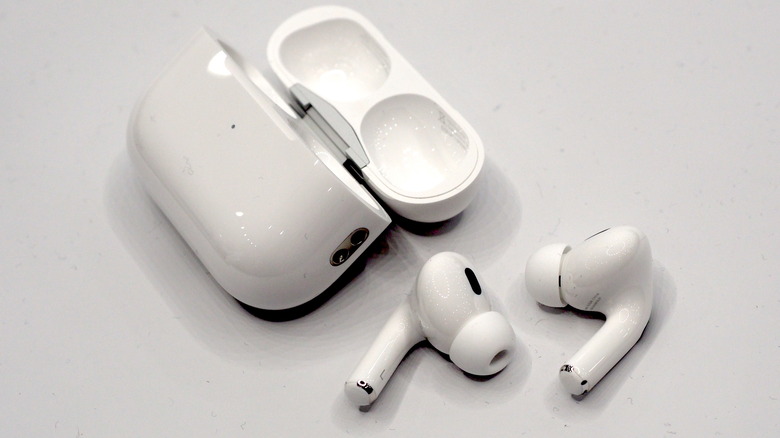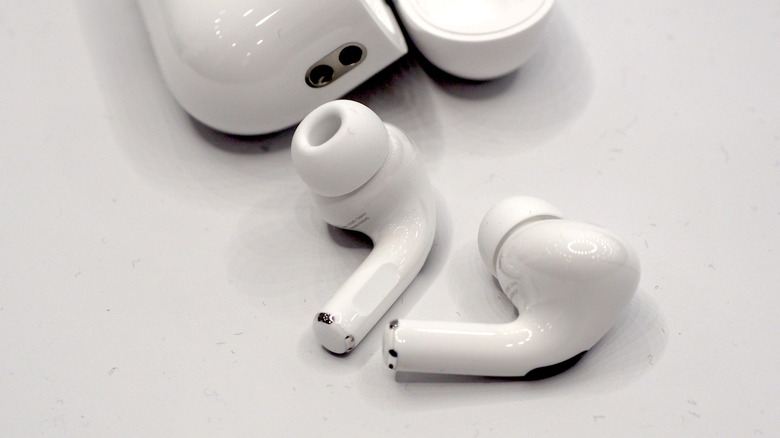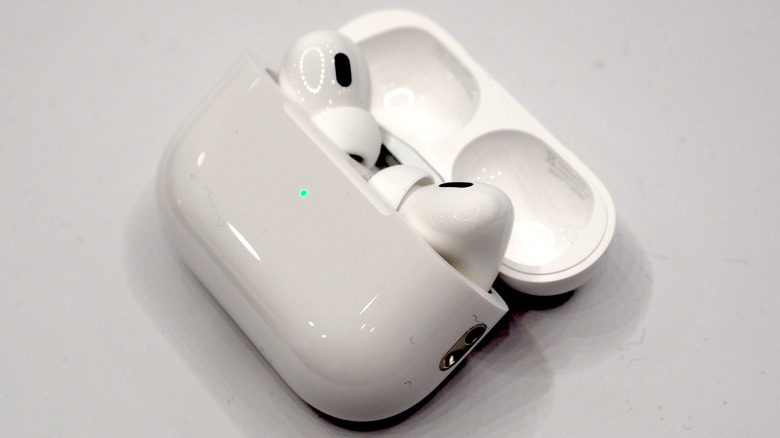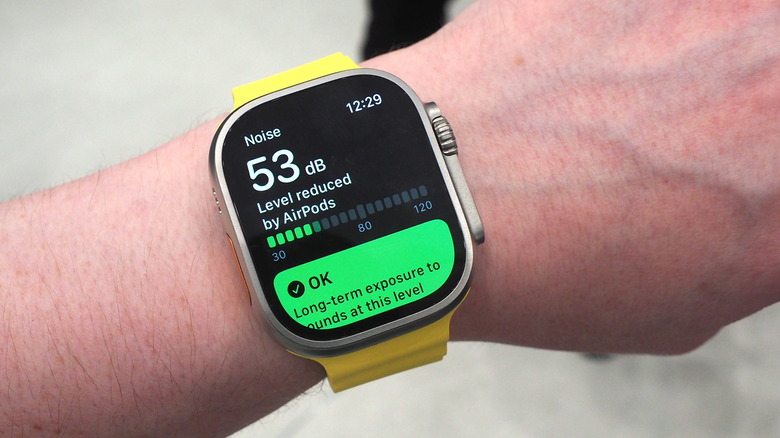New AirPods Pro Hands-On: 2022's Update Focuses On Where It Matters
I have a problem with Apple's new AirPods Pro. It's actually the same problem I had with the first-generation true wireless earbuds, and it's not — I should point out early on — a reason why you shouldn't buy or preorder them. That's because the problem is my ears themselves, and the fact that they can be downright problematic when it comes to earbud fit.
Most in-ear, fully wireless earbuds rely on friction to keep the 'bud itself in your ear canal. The little rubber tip sits snugly — or, at least, it's meant to — against the skin of your ear canal, and that holds it in place. Problem is, my ears seem to be the wrong shape, size, angle, or some combination of all three, and it can make getting earbuds to stick in place a real chore.
It's the reason I usually prefer earbuds that have a little rubber fin, or hook. Currently, my go-to is the Beats Fit Pro, which may have only a small nubbin but which is exceptionally comfortable for me to wear for longer periods. This time around, however, Apple thinks it has the fix for troublesome ears like mine, and it relies on a combination of hardware and software magic.
A better fit
For the former, Apple is now adding a fourth set of ear tips in the box. The small, medium, and large are there as before, but there's now an extra-small set, too, to better grip your ear canal. I'm a big fan of options like that, and so while third-party ear tips have been available for the first-generation AirPods Pro, having Apple include more in the box is definitely preferable.
The other half of the change, though, relies on some software magic. If you've got an iPhone with a TrueDepth camera — and if you're an AirPods user, you probably do — you can use that to create a custom acoustic profile suited to the actual shape of your ears. It involves holding up the phone to your ear and allowing it to "scan" you. The result isn't going to be the perfect result of an ideal physical seal, but it could make a big difference. I wasn't able to try it out during Apple's demo, but we'll be putting the system through its paces for our full review.
H2 at the heart
It's part of a broad-sweeping set of changes to the AirPods Pro software, that rely themselves on the new H2 chipset. Apple bucked industry trends in earbuds when it introduced its own silicon to handle Bluetooth connectivity, battery power management, and more, but it's hard to argue that the investment wasn't worth it in the end. The pairing process between AirPods and other Apple devices is arguably the benchmark in the industry.
With the Apple H2, the processing capabilities have been scaled up. It's enough, Apple says, for much better coverage across the frequency range when you're listening to music, and it works with the updated drivers and their extra bass.
What stood out as I listened to Taylor Swift in the swirl of Apple's bustling demo area, though, was how well it all held up in a real-world environment. It's easy to look at something like the headphones market and think about people listening to their favorite tracks in blissful isolation. The reality, though, is that we typically end up streaming Apple Music or Spotify while we're surrounded by others.
The world at a distance
It's how well the new AirPods Pro keeps that outside world at arm's length that impressed me. The new adaptive Transparency mode, for example, can adjust the level of active noise cancellation according to the sounds in the environment around you. Meanwhile, switching to full ANC trimmed the 70-80 dB of sound to the low 50 dB region, according to the companion app on the Apple Watch Ultra I was wearing at the time.
No, these aren't the earbuds you should be wearing for complete isolation, or in situations where there's legitimate, long-term danger to your hearing. But as a way to choose how much of the outside world makes it through, whether that be conversations or a safety level of traffic hubbub for when you're crossing the road, it's nice to have a broader array of options.
The same goes for the new gesture support. Having to rely on Siri to adjust volume was one of my lingering annoyances with the first-generation AirPods Pro: it's just plain annoying to have to ask the assistant to change how loud your music is. Apple has responded by adding a capacitive swipe gesture to the stems of the new AirPods Pro, so you can stroke the volume up or down.
The changes Apple needed to make
It was a little tricky to get right, I found. You have to support the rear of the stem with your thumb, and then use your fingertip to gently graze up and down the capacitive pad. There's an audible cue as the volume clicks through different levels. Still, while it can be fiddly, it's definitely better than chatting with Siri.
And... that's it. There's no attempt to use the clever swiping magic to do anything else, which is an admirable show of restraint compared to how other earbud makers seem determined to fit as many different features, taps, and programmable gestures into their headsets. There's a speaker to bleat if you lose the AirPods Pro case, and MagSafe/Apple Watch charger support for more flexibility, and if they don't feel so much like game-changers then it's probably because they just seem like actually useful real-world features that make living with the new AirPods Pro that bit easier.
The reality was, there was still a whole lot to like about the original AirPods Pro, and what Apple needed to update or improve was a relatively short list. With the same $249 sticker price, it's effectively a no-cost update, which it's difficult to criticize. If you're an iPhone user, and you want fully wireless earbuds, the obvious choice remains Apple's EarPods Pro.




